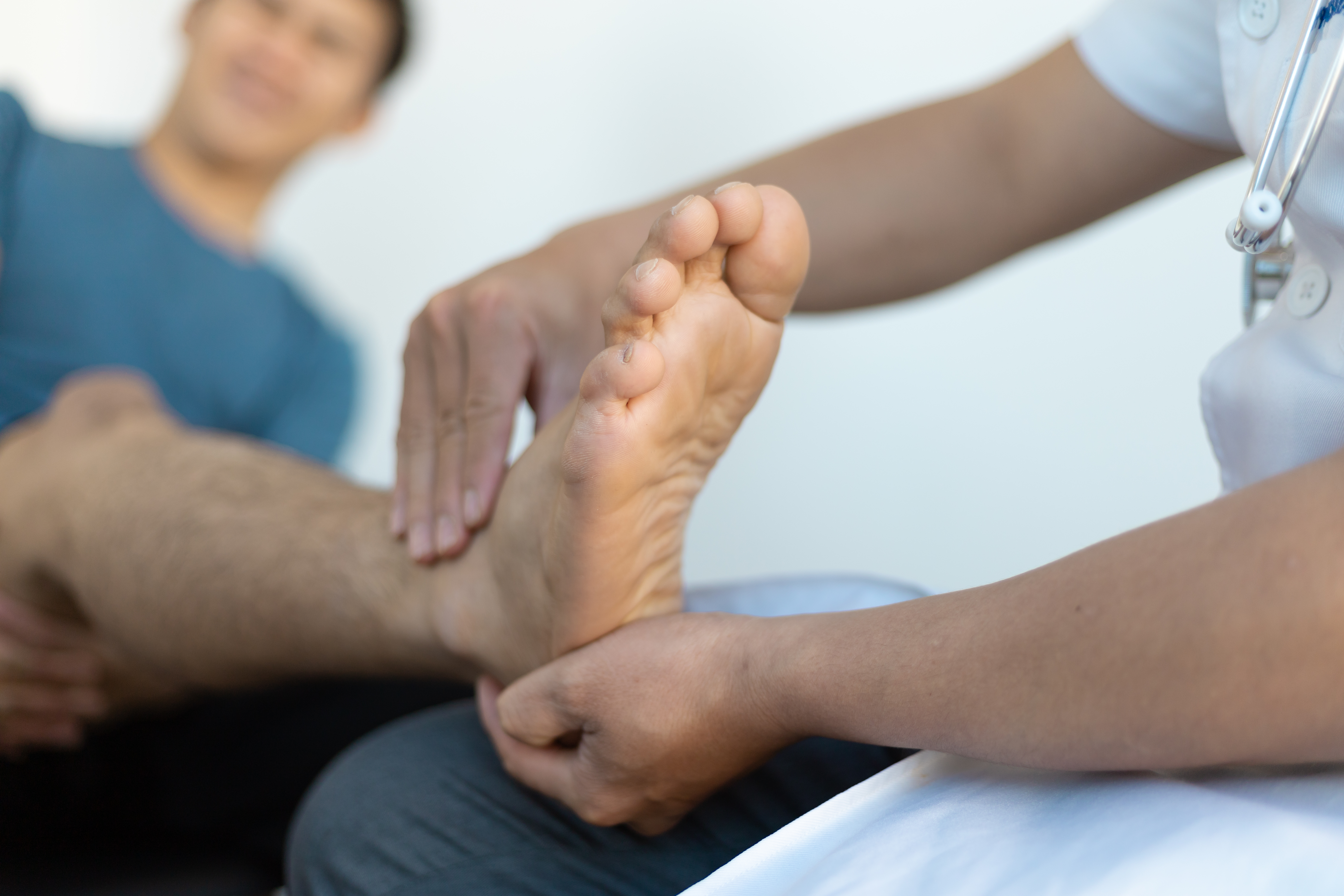Equinus
If you suffer from deteriorative arthritis, please Schedule an appointment with one of our orthopedic specialists as soon as possible.
What Is Equinus?
Equinus is a condition characterized by limited upward movement of the ankle, preventing the foot from achieving a neutral position. This restriction, caused by tightness in the calf muscles or Achilles tendon, leads to walking difficulties and other related issues. Individuals with equinus often compensate by altering their gait, which can cause additional problems such as pain in the foot, knee, hip, or lower back.
Various factors contribute to equinus, including congenital abnormalities, muscle or tendon injuries, prolonged immobilization, or neurological conditions such as cerebral palsy. Diagnosing equinus typically involves a physical examination and an assessment of the patient’s medical history.
Treatment options vary depending on the severity and underlying cause. They range from stretching exercises and physical therapy to more invasive procedures like casting, orthotic devices, or surgery. Addressing equinus early helps prevent further complications and improves the patient’s overall mobility and quality of life.
What Are The Two Types of Equinus?
Structural equinus arises from physical limitations within the ankle joint’s structures, such as tightness or shortening of the Achilles tendon or calf muscles. Conditions like muscular dystrophy, previous injuries, or surgeries can cause this condition, making it either congenital or acquired. In contrast, functional equinus occurs when the ankle joint has a normal or near-normal range of motion, but compensatory factors hinder dorsiflexion during movement. These factors may include muscle imbalances, neurological conditions, or gait abnormalities.
For instance, a person with a neurological condition may have difficulty coordinating muscle movements, leading to improper foot positioning. Similarly, gait abnormalities can force the ankle to function in a limited range of motion, exacerbating equinus. Both types of equinus can lead to walking difficulties and associated pain in other body parts, such as the knees, hips, or lower back. Addressing the underlying causes through physical therapy, orthotics, or surgery can significantly improve mobility and quality of life.
What Are The Symptoms Of Equinus?
Treatment for equinus depends on the underlying cause and severity of the condition. Non-surgical interventions may include:
- Stretching exercises: Specific stretching routines targeting the calf muscles and Achilles tendon can help improve ankle dorsiflexion.
- Physical therapy: A physical therapist can provide guidance on stretching techniques, strengthening exercises, and gait training.
- Orthotic devices: Heel lifts or shoe inserts can help compensate for the limited ankle motion and improve foot alignment and function.
- Night splints: Wearing a splint or brace at night can help maintain a prolonged stretch on the calf muscles and Achilles tendon.
- Footwear modifications: Using shoes with a heel lift or shoe modifications to accommodate the equinus can be beneficial.
However, in cases where conservative measures do not provide sufficient relief or when there is a significant structural limitation, surgical intervention, may be considered.
Additionally, it is important to consult with a healthcare professional, such as a podiatrist or orthopedic specialist, for an accurate diagnosis and appropriate treatment plan for equinus. Moreover, they can assess the underlying cause, provide personalized recommendations, and monitor progress to improve ankle range of motion and prevent complications.
Equinus Procedure
The equinus procedure corrects limited upward movement of the ankle caused by structural or functional issues. Surgeons typically perform the procedure under local or general anesthesia. They make a small incision to access the tight calf muscles or Achilles tendon. Using precise techniques, they lengthen or release these structures to improve the ankle’s range of motion. The procedure aims to reduce tension and allow the foot to achieve a neutral position.
Post-surgery, patients may need to wear a cast or brace to support the ankle during the healing process. Physical therapy often follows, focusing on stretching and strengthening exercises to maintain flexibility and prevent recurrence. Patients gradually resume their normal activities as the ankle heals and regains its full range of motion. This procedure effectively alleviates pain and improves mobility, enhancing the overall quality of life for individuals suffering from equinus. Regular follow-ups ensure proper recovery and long-term success.


